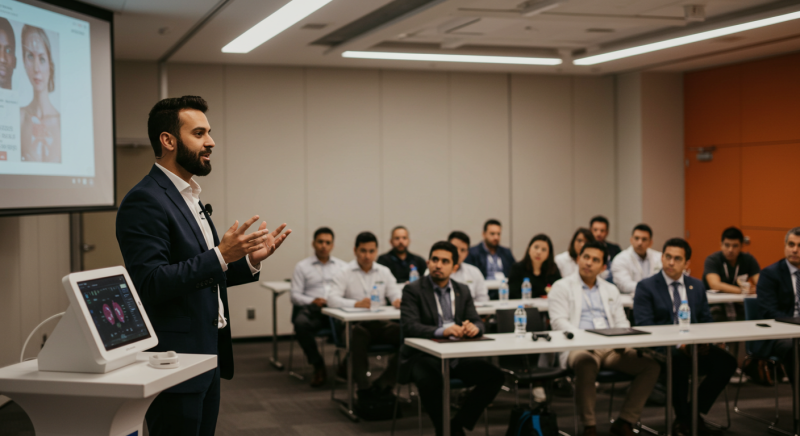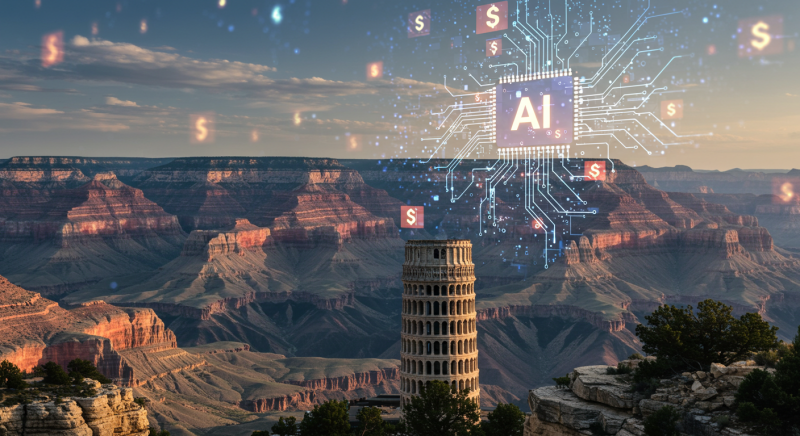Embark on a journey where your vision for groundbreaking technology finally finds its wings. The anxiety of bootstrapping solutions gives way to hope when you uncover the wealth of artificial intelligence grants for USA startups designed to fuel innovation and scale impact in 2025.
Key Takeaways
In this guide, you’ll learn about the most generous artificial intelligence grants for USA startups, from the National Science Foundation’s multi-million-dollar seed funding to Department of Energy awards, alongside insider strategies to strengthen your application and increase your chances of winning non-dilutive capital.

Latest Developments in Artificial Intelligence Grants for USA Startups
Federal agencies are ramping up support with record funding levels. In FY22, SBIR and STTR programs awarded over $4.3 billion across more than 6,000 grants, bolstering artificial intelligence grants for USA startups nationwide HigherGov. Since their inception, SBIR and STTR have delivered over $54.6 billion in non-dilutive awards, creating a robust pipeline for AI-driven ventures CRS Products.
The National Science Foundation’s AI topic invests up to $2 million in seed funding for early-stage research, offering a zero-equity path for entrepreneurs leveraging artificial intelligence grants for USA startups to transform industries seedfund.nsf.gov. Meanwhile, the Department of Energy’s SBIR/STTR Phase II round awards up to $1.1 million to scale prototypes in energy-related AI applications, further empowering artificial intelligence grants for USA startups in the clean-tech sector.
Emerging defense and transportation initiatives have also expanded. AFWERX’s Direct to Phase II program now delivers up to $1.8 million for AI solutions addressing Air Force needs, while the U.S. Department of Transportation recently awarded $2.4 million to small businesses for the Complete Streets AI Initiative, enriching the ecosystem of artificial intelligence grants for USA startups in infrastructure tech
How to Secure Artificial Intelligence Grants for USA Startups: A Step-by-Step Guide
Navigating the grant landscape can be daunting, but a friendly approach and clear milestones make the journey rewarding. Begin by
Align Your R&D Roadmap with Federal Priorities
Before drafting any documents, map your technology goals against the topics each agency is funding. The NSF’s Artificial Intelligence topic explicitly seeks innovations in trustworthy, energy-efficient, and human-centered AI systems seedfund.nsf.gov. Likewise, DOE’s SBIR/STTR calls target AI applications in clean energy and grid resilience, while AFWERX prioritizes autonomous and decision-support tools for defense missions. Demonstrating that your project advances one of these priority areas immediately signals relevance to reviewers of artificial intelligence grants for USA startups seedfund.nsf.govseedfund.nsf.gov.
Complete Mandatory Registrations Early
All SBIR/STTR applicants must register in three systems before proposal submission:
-
SAM.gov for a Unique Entity Identifier (UEI) and financial assistance authority
-
Research.gov to prepare and submit NSF proposals
-
SBIR Company Registry via SBA to obtain your SBC Control ID
These registrations can take weeks—especially SAM.gov—so initiate them at least 60 days before your intended deadline to avoid last-minute delays for your artificial intelligence grants for USA startups applications seedfund.nsf.gov.
Craft a Concise Project Pitch That Resonates
For NSF and many other agencies, an initial Project Pitch filters candidates for full proposals. Structure your 2-page pitch around:
-
Technology Innovation: Explain what makes your AI approach novel and how it solves a critical problem.
-
Technical Objectives and Challenges: Outline key R&D milestones, success metrics (e.g., model accuracy, latency), and foreseeable risks.
-
Market Opportunity: Present evidence of customer need, market size, and your commercialization plan.
-
Company Capability: Highlight your team’s relevant expertise and any supporting partnerships.
A well-balanced pitch convinces reviewers that your startup merits non-dilutive artificial intelligence grants for USA startups sciencedocs.comseedfund.nsf.gov.
Develop a Full Proposal with Clear Objectives and Milestones
Once invited to submit, expand your pitch into a full proposal that addresses all merit-review criteria:
-
Intellectual Merit: Detail your AI methodology, experimental design, and data strategy.
-
Broader Impacts: Describe societal benefits—such as improved healthcare diagnostics or energy savings—and plans for diversity, equity, and inclusion.
-
Work Plan & Timeline: Break the 6- to 24-month project into phases with quantifiable deliverables.
-
Budget & Justification: Provide a transparent breakdown of personnel, equipment, travel, and subcontract costs, tying each line item to project milestones.
Adhering closely to the agency’s Full Proposal Guide ensures compliance and underscores your readiness to execute once funded seedfund.nsf.govnsfproposal.com.
Engage Program Officers Proactively
Reaching out to program directors—via email or agency webinars—allows you to clarify submission requirements, gauge fit, and receive early feedback. Prepare targeted questions (e.g., eligibility nuances, evaluation criteria weightings) and reference your specific AI application to demonstrate preparedness. This engagement not only refines your proposal but also humanizes your team in the reviewers’ eyes, boosting your competitiveness for artificial intelligence grants for USA startups seedfund.nsf.govdeeprfp.com.
Leverage Partnerships and Letters of Support
Collaborations with national labs, universities, or industry partners lend credibility and grant access to specialized facilities or datasets. Secure letters of support that clearly state each partner’s role—such as providing annotated datasets for your machine-learning models—to strengthen your narrative for artificial intelligence grants for USA startups Reddit.
Refine, Review, and Polish Your Budget
A realistic, defensible budget demonstrates that you understand project costs and administrative requirements. Cross-check your figures against typical award sizes (e.g., NSF Phase I ~$256 K, Phase II up to $2 M) and justify any deviations. Small line-item errors or omissions can trigger administrative hold-ups, so rigorous internal reviews are essential to secure artificial intelligence grants for USA startups seedfund.nsf.gov.
Submit, Track Progress, and Respond Quickly
Submit your full proposal through the agency portal (e.g., Research.gov for NSF) well before the deadline to avoid technical glitches. After submission, monitor tracking portals for review assignments and be ready to provide supplemental information if requested. Timely responsiveness during the decision phase often distinguishes successful applicants vying for competitive artificial intelligence grants for USA startups seedfund.nsf.gov.
By following these steps—each infused with the focus on artificial intelligence grants for USA startups—you’ll build a compelling, compliant, and competitive application ready to secure non-dilutive funding and propel your AI venture forward.

Key Opportunities and Funding Ranges for Artificial Intelligence Grants for USA Startups
Several flagship programs offer competitive funding:
National Science Foundation SBIR AI Topic
The NSF’s SBIR program under the Artificial Intelligence topic provides up to $2 million in combined Phase I and Phase II seed funding for transformative AI technologies that are safe, explainable, and resource-efficient (seedfund.nsf.gov/topics/artificial-intelligence). This funding is entirely non-dilutive, allowing startups to retain full equity while advancing novel deep-learning systems, edge AI devices, or neuromorphic hardware with strong commercial potential (seedfund.nsf.gov/apply/the-basics).
Department of Energy SBIR/STTR
DOE’s SBIR/STTR programs allocate roughly Phase I awards up to $200,000 and Phase II awards up to $1,100,000 over two years, specifically targeting AI applications in clean-energy research, grid resilience, and sustainable materials (energy.gov/eere/iedo/sbir). Each DOE technical office curates topics—such as AI for advanced manufacturing or privacy-preserving modeling—ensuring that artificial intelligence grants for USA startups align with mission-critical energy priorities (energy.gov/science/sbir).
National Institute of Standards and Technology SBIR
NIST’s SBIR program offers Phase I feasibility grants up to $100,000 (six-month projects) and Phase II awards up to $400,000 (two-year R&D efforts), under cooperative agreements designed to transition precision measurement and cybersecurity AI solutions toward commercialization (nist.gov/tpo/small-business-innovation-research-program-sbir/resources/participation-eligibility-and). This program is ideal for startups developing AI-driven metrology tools, secure federated learning frameworks, or novel hardware-security co-designs under artificial intelligence grants for USA startups.
AFWERX Direct-to-Phase II (D2P2)
For defense-oriented AI ventures, AFWERX’s Direct-to-Phase II streamlines access to SBIR awards up to $1.25 million (and STTR up to $1.8 million) to prototype dual-use AI systems, from autonomous decision-support to tactical data fusion. Unlike traditional Phase I/II pathways, D2P2 lets qualified startups skip straight to prototyping, provided they demonstrate a signed Air Force customer commitment and robust technical merit, accelerating artificial intelligence grants for USA startups in the defense sector.
U.S. Army SBIR AI/ML Opportunities
The Army SBIR program maintains an always-open Broad Agency Announcement, offering Phase I awards up to $250,000 for six-month feasibility studies and Phase II awards up to $2 million over 18–24 months to scale prototypes. Recent AI/ML-focused topics—such as “Artificial Intelligence for Interoperability” and “Autonomous Robotic Bridging”—each carry Phase I grants up to $250,000, providing vital capital for early AI integration into tactical systems. These artificial intelligence grants for USA startups support everything from LLM-based data unification to edge-computing vision systems for soldier-worn devices.
By leveraging these flagship artificial intelligence grants for USA startups, founders can tap into non-dilutive capital tailored to their technology’s maturity—from seed-stage feasibility studies to multimillion-dollar prototyping projects. Whether your AI innovation targets clean energy, precision manufacturing, defense autonomy, or interoperability, these programs offer defined funding ranges and technical support to propel your startup toward commercialization.
Insider Tips to Maximize Success with Artificial Intelligence Grants for USA Startups
Approach your grant narrative with clarity and passion. Emphasize the transformative potential of your AI solution, ensuring that reviewers see both the technical roadmap and the broader societal benefits of artificial intelligence grants for USA startups. Reference prior success stories—like Caption Health’s ultrasound AI or Kintsugi Mindful Wellness’s voice biomarker platform—to illustrate feasibility and impact seedfund.nsf.govseedfund.nsf.gov.
Engage with agency webinars and office hours to ask specific questions and build rapport; transparency and proactive communication often tip the scales in tight competitions for artificial intelligence grants for USA startups. Finally, maintain concise documentation of IP strategy, data management, and commercialization paths to satisfy administrative requirements swiftly ies.ed.gov.

Conclusion
Empowered by a diverse array of artificial intelligence grants for USA startups, visionary founders can transform hopes into scalable solutions. From NSF’s multi-million-dollar seed programs to Defense and Transportation SBIR initiatives, non-dilutive capital awaits those who craft compelling proposals, demonstrate technical prowess, and showcase real-world impact. Seize these opportunities to propel your startup toward success.
FAQ
Q: What are the best artificial intelligence grants for USA startups?
The top opportunities include NSF SBIR AI (up to $2 million), DOE SBIR/STTR (up to $1.1 million), NIST SBIR ($150k/$400k), AFWERX D2P2 ($1.8 million), and the Army AI/ML open topic drawing from a $50 million pool seedfund.nsf.govarmysbir.army.mil.
Q: How competitive are artificial intelligence grants for USA startups?
Selection rates hover around 17.6% for Phase I SBIR/STTR awards, with approximately 3,859 Phase I grants chosen from 21,911 proposals in FY22 sbir.gov.
Q: Can I apply to multiple artificial intelligence grants for USA startups simultaneously?
Yes—provided you tailor each application to the specific program’s focus areas and eligibility requirements, you can pursue NSF, DOE, NIST, AFWERX, and other grants in parallel.
Q: How do I prepare a winning proposal for artificial intelligence grants for USA startups?
Develop a narrative highlighting your AI innovation, societal impact, clear milestones, and commercialization strategy. Engage early with agency staff, refine your budget, and gather collaborative letters of support.
read more
